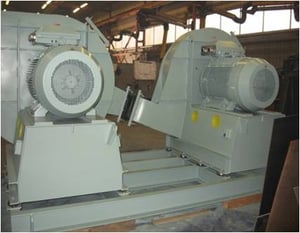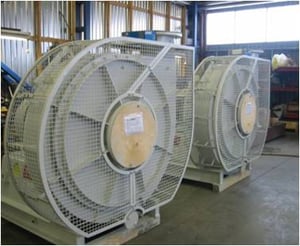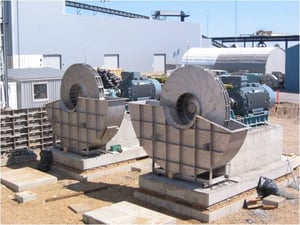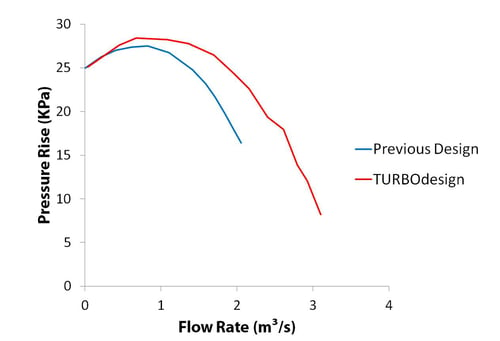- TURBOdesign Core
TURBOdesign Pumps & Fans
TURBOdesign Suite provides tools to designers to put them in direct control of aerodynamic design to streamline every step of the design process for turbomachinery components.
Our Pumps & Fans packages
- TURBOdesign Pro
TURBOdesign Compressors & Turbines
TURBOdesign Suite provides tools to designers to put them in direct control of aerodynamic design to streamline every step of the design process for turbomachinery components.
Our Compressors and Turbines packages...
- TURBOdesign Optima
TURBOdesign Optima
TURBOdesign Suite provides tools to designers to put them in direct control of aerodynamic design to streamline every step of the design process for turbomachinery components.
TURBOdesign Optima is our automatic optimization package
- Toolkit: 3D Blade Design
3D Blade Design
Our turbomachinery design toolkits include one on 3D blade design...
- Toolkit: Meanline Design
Meanline Design
TURBOdesign Suite provides tools to designers to put them in direct control of aerodynamic design to streamline every step of the design process for turbomachinery components.
Lorem ipsum dolor sit amet, consectetur adipiscing elit. Suspendisse varius enim in eros elementum tristique.
Lorem ipsum dolor sit amet, consectetur adipiscing elit. Suspendisse varius enim in eros elementum tristique. Duis cursus, mi quis viverra ornare, eros dolor interdum nulla, ut commodo diam libero vitae erat. Aenean faucibus nibh et justo cursus id rutrum lorem imperdiet. Nunc ut sem vitae risus tristique posuere.
- Toolkit: Volute / Scroll Geometries
Volute/Scroll Geometries
TURBOdesign Suite provides tools to designers to put them in direct control of aerodynamic design to streamline every step of the design process for turbomachinery components.
Lorem ipsum dolor sit amet, consectetur adipiscing elit. Suspendisse varius enim in eros elementum tristique. Duis cursus, mi quis viverra ornare, eros dolor interdum nulla, ut commodo diam libero vitae erat. Aenean faucibus nibh et justo cursus id rutrum lorem imperdiet. Nunc ut sem vitae risus tristique posuere.
- Toolkit: Multi-Point Optimization
Multi-Objective Optimization
TURBOdesign Suite provides tools to designers to put them in direct control of aerodynamic design to streamline every step of the design process for turbomachinery components.
Lorem ipsum dolor sit amet, consectetur adipiscing elit. Suspendisse varius enim in eros elementum tristique. Duis cursus, mi quis viverra ornare, eros dolor interdum nulla, ut commodo diam libero vitae erat. Aenean faucibus nibh et justo cursus id rutrum lorem imperdiet. Nunc ut sem vitae risus tristique posuere.
- Compressors and Turbines
Compressors
Test
- Fans and Blowers
Fans and Blowers
Test
- Pumps and Hydraulic Turbines
Pumps and Hydraulic Turbines
Test
- Transonic Compressors, Fans and Turbines
High Speed Turbines
Test
- Academia
Academia
Test
- Engineering Services
Design Consultancy
Test
- R & D
Research and Development
Test
- Training
Training
- Blog
Blog
Catch up with the very latest and useful articles
- Case Studies
Case Studies
Read our success stories from companies of all sizes who are transforming the way they design turbomachinery components.
- Consultancy Summaries
Consultancy Summaries
Read our success stories from companies of all sizes who are transforming the way they design turbomachinery components.
- Publications
Publication
Browse the latest and previous editions of our publications library
- Webinars
On-Demand Webinar Library
Playback our webinars
- White Papers
White Paper
Browse our white paper library.



 The decision to incorporate TURBOdesign1 followed an in depth evaluation of all available turbomachinery design software on the market. The choice fell on TURBOdesign1 for multiple reasons; a solid reference portfolio, ease of use and nonetheless very competitive pricing. “We have not been disappointed” says Erik Eriksson, Technical Manager at FLEBU, “although the FLEBU R&D team has only used TURBOdesign1 for 6 months we have already developed brand new designs for our increasingly growing market segments. The results have been truly amazing with extremely short lead times even though these were clean-sheet designs whereby we have already manufactured three prototypes and carried out thorough testing according to BS848, ISO 5801 and 3744.”
The decision to incorporate TURBOdesign1 followed an in depth evaluation of all available turbomachinery design software on the market. The choice fell on TURBOdesign1 for multiple reasons; a solid reference portfolio, ease of use and nonetheless very competitive pricing. “We have not been disappointed” says Erik Eriksson, Technical Manager at FLEBU, “although the FLEBU R&D team has only used TURBOdesign1 for 6 months we have already developed brand new designs for our increasingly growing market segments. The results have been truly amazing with extremely short lead times even though these were clean-sheet designs whereby we have already manufactured three prototypes and carried out thorough testing according to BS848, ISO 5801 and 3744.” FLEBU has a 50% share of the world market for IG Fans which are an important component of Inert Gas Generator units installed on every oil tanker around the world. Their function is to insert Inert Gas and low oxygen content air into the tanks of the ship during unloading of the crude oil. Fans reliability is a primary concern as a malfunction can lead to catastrophic explosions. These types of blowers are therefore subject to very strict quality requirements where every unit is tested before delivery with a multitude of Class Tests, Capacity Tests and FATs.
FLEBU has a 50% share of the world market for IG Fans which are an important component of Inert Gas Generator units installed on every oil tanker around the world. Their function is to insert Inert Gas and low oxygen content air into the tanks of the ship during unloading of the crude oil. Fans reliability is a primary concern as a malfunction can lead to catastrophic explosions. These types of blowers are therefore subject to very strict quality requirements where every unit is tested before delivery with a multitude of Class Tests, Capacity Tests and FATs.
